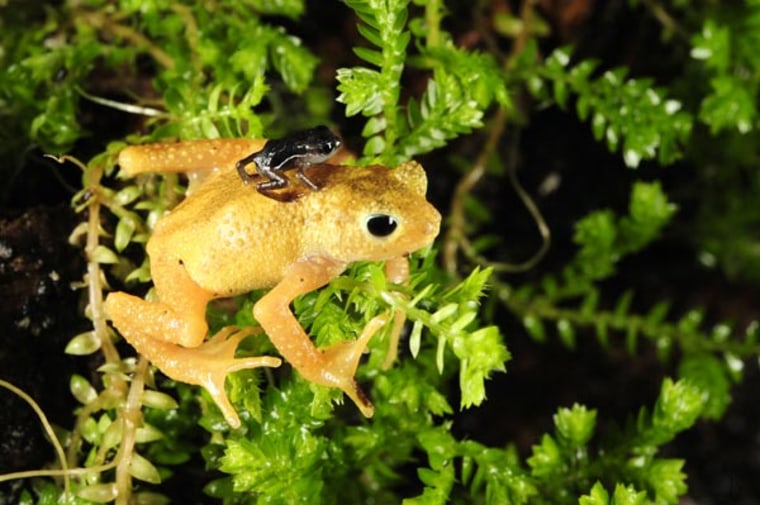An extremely rare toad that's extinct in the wild is thriving in a lab environment, but researchers are still trying to determine whether it's safe to reintroduce the species into the wild.
A population of the tiny toads was first found in 1996 living near the bottom of a waterfall where Tanzania's Kihansi River plunges more than 3,000 feet; the beginning of the construction of a hydroelectric dam on the river led to their discovery.
The toads flourished living by the vertical wetland created by the forceful spray that came off of the waterfall's pounding water.
The Kihansi spray toad is golden yellow in color, with pale white, nearly translucent skin on its abdomen that makes its intestines visible through its skin. The toad weighs only a few grams and belongs to a unique group of amphibians that give birth to live young instead of laying eggs. After delivering their babies, the toads carry their young on their backs.
"After much searching, it turned out to be a truly endemic and unique species," James Gibbs, a conservation biologist at the SUNY College of Environmental Science and Forestry (ESF) in Syracuse, N.Y., said in a statement. "They have never been seen anywhere else. It might be the four-legged vertebrate species with the smallest range in the world."
The construction of the dam reduced the waterfall's spray to the toads' habitat, and consequently, their numbers quickly declined. In an effort to conserve their population, 500 of the species were moved to New York's Bronx Zoo, but their numbers continued to dwindle in the wild to the point of extinction.
Some of the toads were then transferred to the Toledo Zoo in Ohio, where researchers were able to sustain about 50 of the toads. Soon, the toads were reproducing in the lab and their captive population rebounded. Their recovery has been so successful that the Tanzanian government is planning to reintroduce the species back into the Kihansi River Gorge.
ESF researchers are currently studying the effects that the chytrid fungus, which is causing declines among amphibians worldwide, could potentially have on the reintroduced toads. They are also testing to make sure that the area by the dam has stabilized enough to provide a suitable habitat despite pesticides in the river — particularly endosulfan from upriver agriculture.
"Nobody wants to put lots of toads back if they're going to suffer and not succeed in the restored habitat," Gibbs said.
You can follow LiveScience writer Remy Melina on Twitter . Follow LiveScience for the latest in science news and discoveries on Twitter and on .
